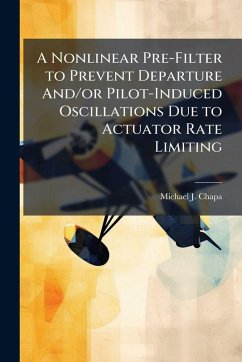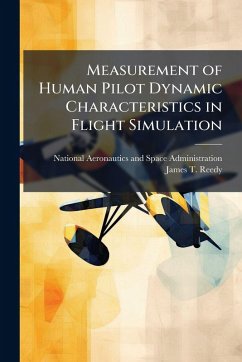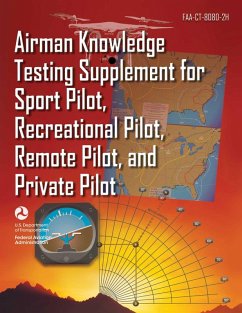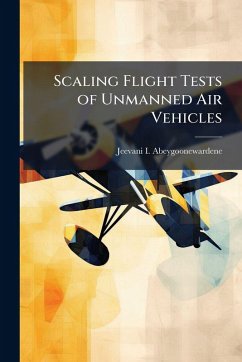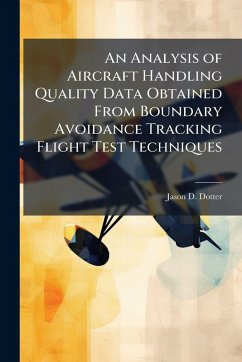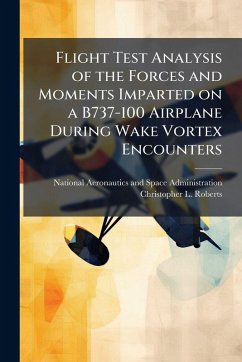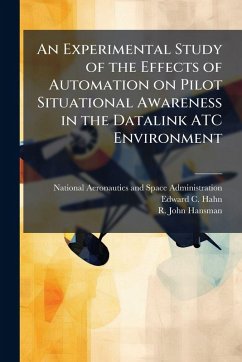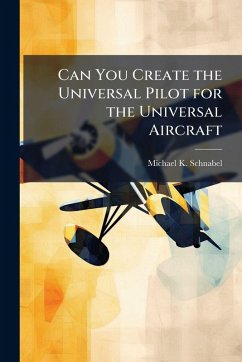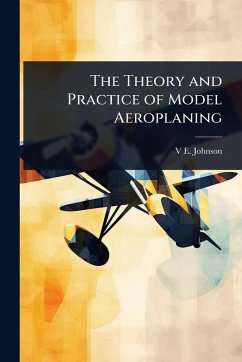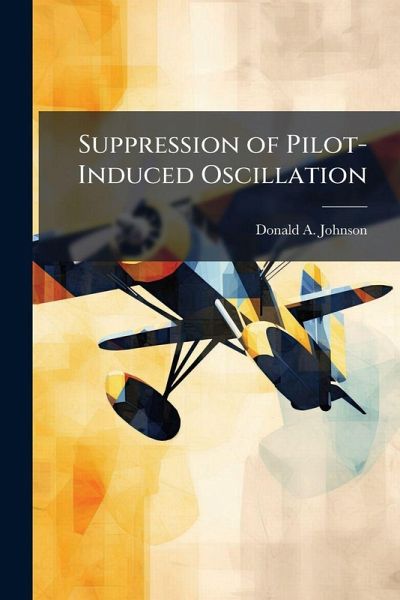
Suppression of Pilot-Induced Oscillation

PAYBACK Punkte
10 °P sammeln!
The purpose of this simulation study and flight test was to attempt to eliminate oscillatory departures and/or pilot-induced oscillations (PIOs) by means of selectively attenuating pilot command in the oscillatory frequency range. While rate limiting is a major contributor to many PIOs, this study examined both rate limiting and system time delay PIO events. A more broad approach to eliminating oscillatory departures and PIOs will assist pilots in maintaining aircraft control and therefore save both lives and aircraft. This simulation study was conducted at the Air Force Institute of Technolog...
The purpose of this simulation study and flight test was to attempt to eliminate oscillatory departures and/or pilot-induced oscillations (PIOs) by means of selectively attenuating pilot command in the oscillatory frequency range. While rate limiting is a major contributor to many PIOs, this study examined both rate limiting and system time delay PIO events. A more broad approach to eliminating oscillatory departures and PIOs will assist pilots in maintaining aircraft control and therefore save both lives and aircraft. This simulation study was conducted at the Air Force Institute of Technology (AFIT), Wright-Patterson AFB, Ohio, and at the United States Air Force Test Pilot School (USAF TPS), Edwards AFB, California. The flight test project was flown in the USAF NF-16D Variable Stability In-flight Simulator Test Aircraft (VISTA) aircraft (S/N 86-0048) at Edwards AFB, CA. This aircraft was maintained and operated by the Veridian Engineering, Flight Research Group, Buffalo, New York. This work has been selected by scholars as being culturally important, and is part of the knowledge base of civilization as we know it. This work was reproduced from the original artifact, and remains as true to the original work as possible. Therefore, you will see the original copyright references, library stamps (as most of these works have been housed in our most important libraries around the world), and other notations in the work. This work is in the public domain in the United States of America, and possibly other nations. Within the United States, you may freely copy and distribute this work, as no entity (individual or corporate) has a copyright on the body of the work. As a reproduction of a historical artifact, this work may contain missing or blurred pages, poor pictures, errant marks, etc. Scholars believe, and we concur, that this work is important enough to be preserved, reproduced, and made generally available to the public. We appreciate your support of the preservation process, and thank you for being an important part of keeping this knowledge alive and relevant.



